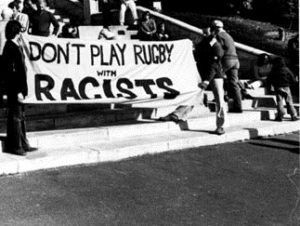
There has been little discussion about the news that the South African team for the Black Caps’ tour of Africa will be chosen on the basis of race, and not merit. For the first time since the early 1980s, New Zealand finds itself faced with a team that leaves out its best players for being the wrong skin colour.
CricInfo reports that “The two-match series is the first South Africa play since last month’s announcement that CSA will impose selection criteria relating to the number of players of colour in all national teams in accordance with a memorandum of understanding signed with the country’s sports ministry.”
In April this year, the South African Sports Minister Fikile Mbalula banned Cricket South Africa from hosting international tournaments for one year because of being too slow to reach transformation targets.
The ‘memorandum of understanding’ signed by Cricket South Africa could also be understood as a surrender document.
It sounds unbelievable, but the South African Government has decreed that a maximum of 40% of the South African players can be white. In practice, that means four players in the national cricket side can be white.
This raises the possibility that the injuries said to have been sustained by AB de Villiers and Morne Morkel are a ruse to distract from the fact that some white players have been forced out of the South African team to play the first Test, starting Saturday, by the quota.
South Africa coach Russell Domingo says that “if someone says Hashim Amla or JP Duminy or Dane Piedt is playing because of the colour of their skin, they are smoking something.” He neglects to mention Temba Bavuma, who, as a specialist batsman with a first-class batting average of 38, probably does not deserve a place in the national side.
If the South African cricket team is chosen on the basis of race, and not on merit, it has no business on the international stage.
Probably it’s too early to yet make a judgment, because we don’t yet know if the quota is an honest attempt at transforming a sporting scene that gives undue advantage to white people, or if it’s simply a crude attempt to disadvantage a racial enemy.
For my part, I’ll probably just be happy to see Kane Williamson facing up to Dale Steyn for a few weeks.
– DAN MCGLASHAN



